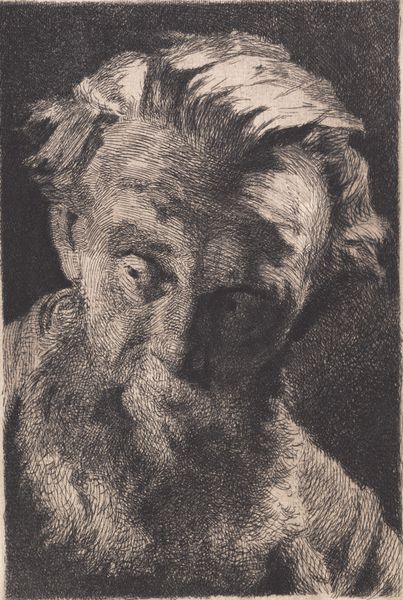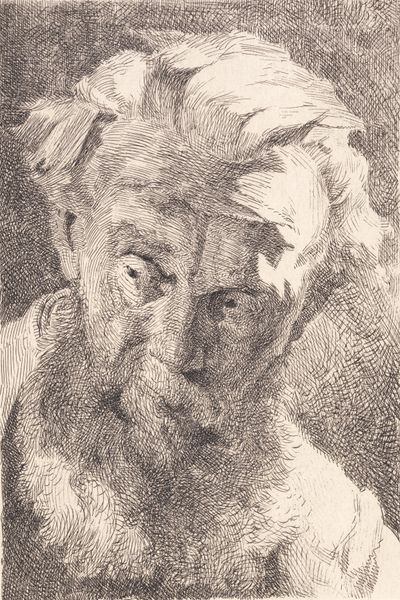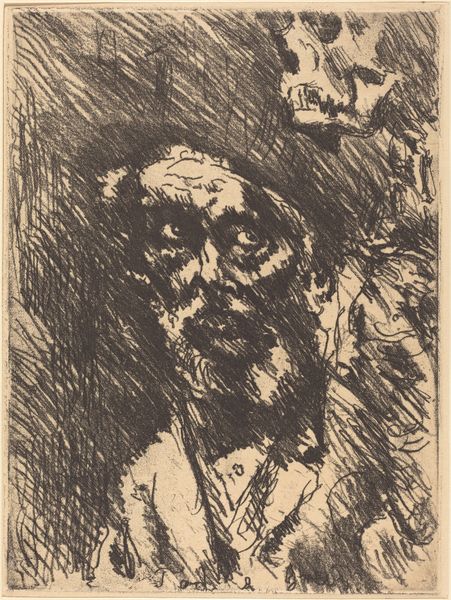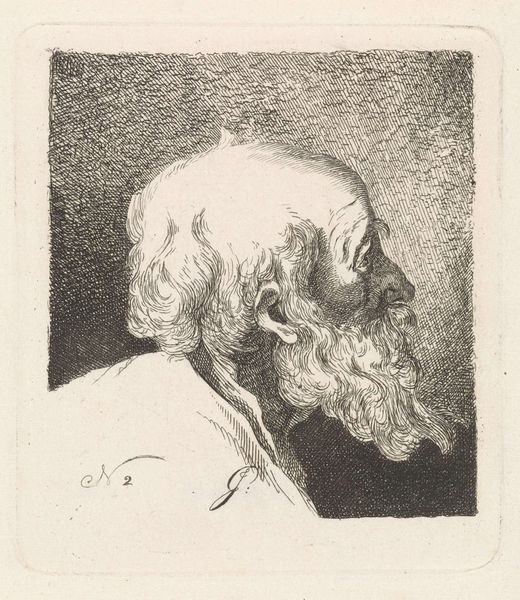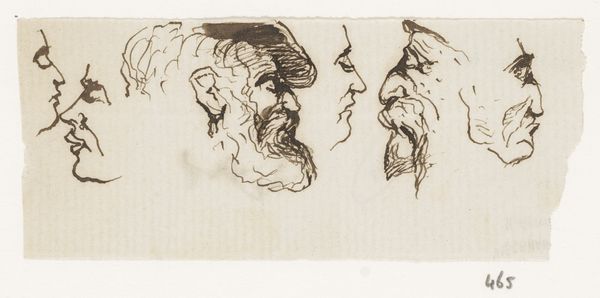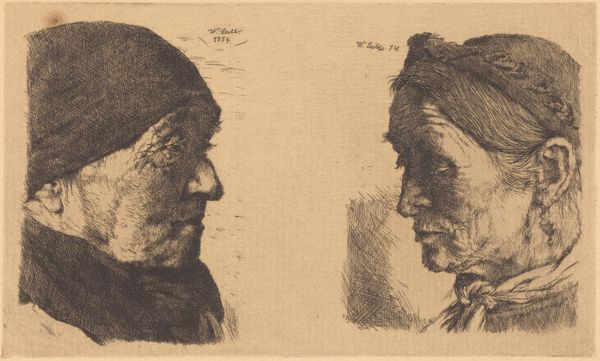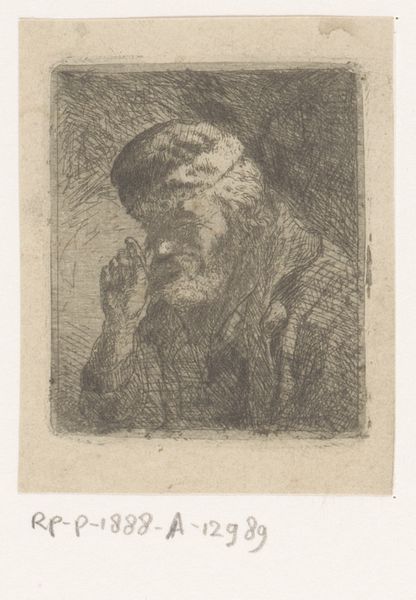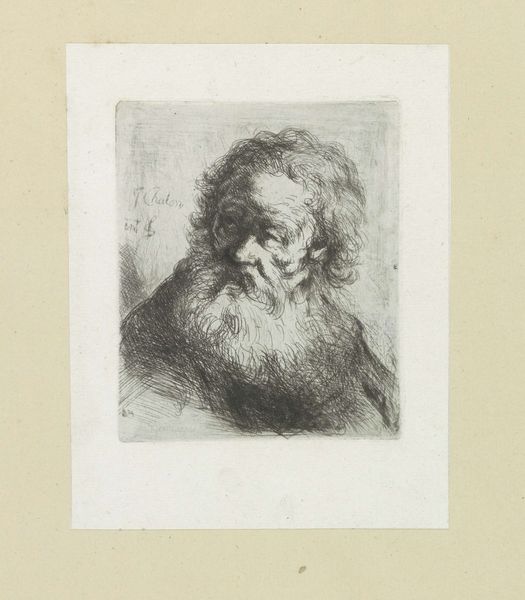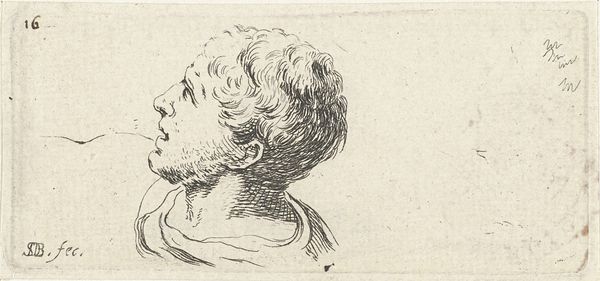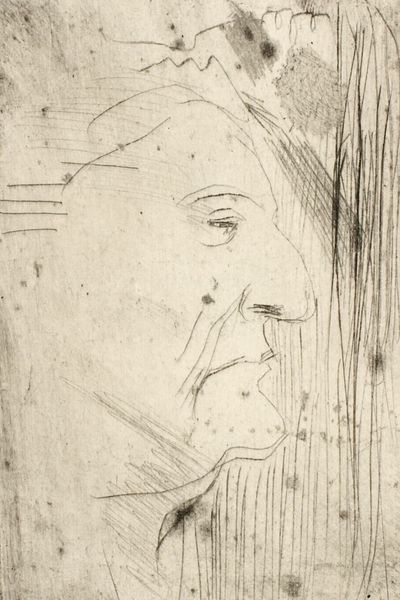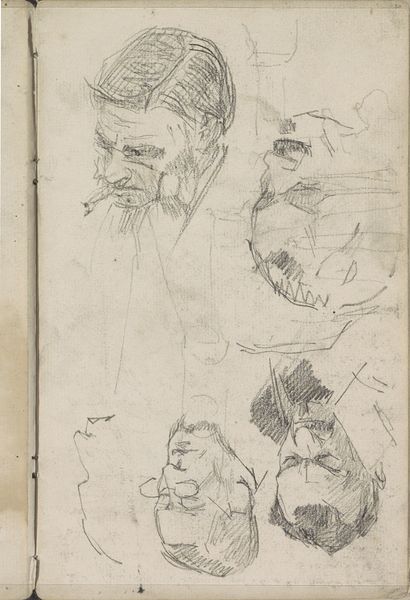
drawing, print, pencil, engraving
#
portrait
#
drawing
# print
#
pencil sketch
#
pencil drawing
#
pencil
#
portrait drawing
#
engraving
#
realism
Dimensions: 81 mm (height) x 181 mm (width) (plademaal)
Curator: We’re looking at Frans Schwartz’s “Prøveplade: Tre hoveder” or “Trial Sheet: Three Heads,” an 1899 engraving held here at the SMK. What strikes you initially about this print? Editor: There's a compelling humanity in these faces, a vulnerability. The quick, etched lines give them a sense of immediacy. It's as if we’ve caught them in a private moment. Curator: Schwartz was working within a socio-political climate that placed increasing value on representing the working classes. His raw, honest portrayal bypasses idealization; we confront working-class realities. It rejects academic painting's emphasis on bourgeois subjects. How does the choice of medium affect this portrayal? Editor: The starkness of the engraving and the realism that comes across makes it quite a direct mode of communication. I can't help but think about class identity being explored here. The woman with her headscarf... that would certainly represent some level of enforced modesty within those class lines. What was the popular critical reaction at the time? Curator: His embrace of printmaking and drawing democratized access to art itself, outside academic circles. His critical view was consistent with naturalism; art must engage contemporary debates surrounding labor rights and poverty. Schwartz’s image allows the public to empathize with ordinary people outside of ideal types, disrupting typical notions of dignity and respectability linked to class and social standing. Editor: That's something lost now, the sheer shock to bourgeois society of representing 'ordinary' faces without aesthetic beautification. In its own way, the starkness could have become politicized within cultural movements and conversations. Curator: Absolutely. Schwartz contributes to the artistic call to examine class inequities. This engraving captures faces—sometimes bypassed within conventional settings. Editor: By acknowledging those left out of traditional art narratives, we confront a broader challenge. Curator: Indeed. These heads encourage us to think critically about who constitutes 'art' and society, fostering empathy, a central goal in politically charged climates.
Comments
No comments
Be the first to comment and join the conversation on the ultimate creative platform.
